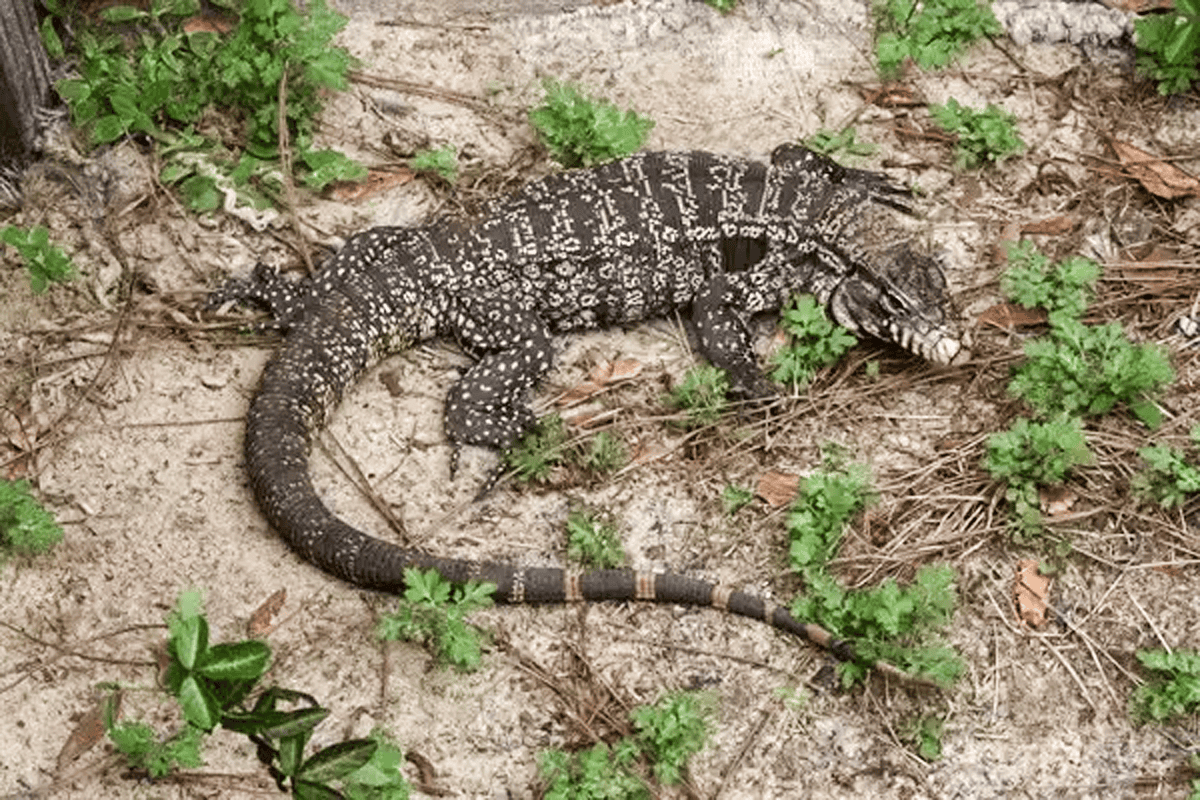Invasive Argentine black and white tegu spotted in Lee County

LEE COUNTY, Fla. – In the latest episode of invasive species to Florida, an Argentine black and white tegu has been spotted in southwestern Florida.
According to the Florida Wildlife Conservation Commission, or FWC, the South American lizard was specifically documented in Lee County. The tegu also has established populations in Hillsborough, Miami-Dade, and Charlotte County.
Roaming across the state, the lizard also has been reported in St. Lucie County through the FWC’s invasive species hotline. Widely now stateside, the lizard also has migrated north to areas of southeastern Georgia.
The Argentine black and white tegu is considered invasive to Florida, meaning the lizard does not belong in its environment. The lizard is in the same category as the familiar green iguana and notorious Burmese python.
Like the tegu, Burmese python sightings have reported in southwest Florida. Similar to the python, the tegu population also has been linked to accidental escapes or intentional releases.
While the current tegu population is unknown, the FWC stated evidence suggests it continues to grow.
Before making a home in Florida, the tegu was primarily located in South America, specifically Brazil, Paraguay, eastern Uruguay and northern Argentina. Now inhabiting both continents, the tegu can be found can be found in savannas, forest clearings, roadsides, and fence rows.
While being a terrestrial animal, or staying closely to the ground, the tegu are strong swimmers and have been seen in marine and freshwater areas, such as flood marshes.
The lizard itself has a mottled black and white coloration that often is arranged into a banding pattern across the back and tail. Baby tegus also typically have bright green heads before fading after one month of age.
For its diet, the tegu is an omnivore, meaning they eat fruits, eggs, insects, small animals and rodents. The lizard also are egg eaters, having been documented to consume American alligator, ground nesting bird, and gopher tortoise eggs in Florida.
Moreover, The tegu has been known to disrupt nesting wildlife of American crocodiles and sea turtles. Pet owners also should be aware as the lizard has reportedly consumed pet food left outdoors.
“Potential impacts of tegus include competition with and preying upon Florida’s native wildlife, including some imperiled and protected species,” the FWC said.
Similar to other lizards, the tegu will go through a hibernated period known as “brumation.” The lizard will then typically awake in February in South Florida and begin breeding in early spring.
On average, female tegus lay 35 eggs after their second year of brumation. Once hatched, tegus grow quickly and can live up to 20 years.
According to the FWC, the tegu can be humanely killed year-round and without a permit or hunting license on 32 commission-managed lands in south Florida.
The FWC encourages reports of Argentine black and white tegu sightings. You can help by taking a picture, noting the location, and reporting the information by calling 1-888-483-4681 or online here.



